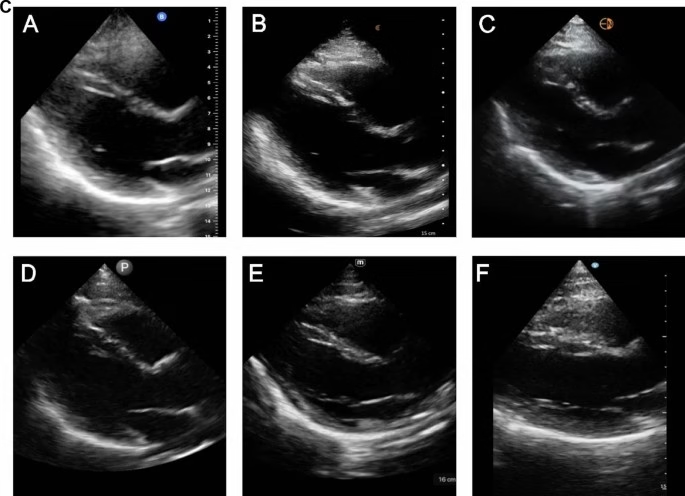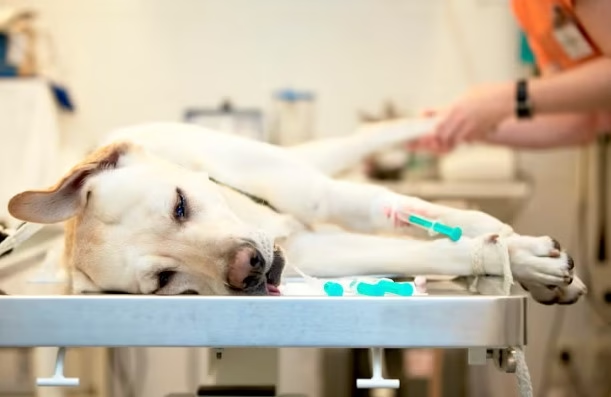- Dog Ultrasound Cost: A Complete Guide for Pet Owners
- Introduction
- What Is a Dog Ultrasound?
- Why Your Dog Might Need an Ultrasound
- Average Dog Ultrasound Cost in 2025
- Factors That Affect Dog Ultrasound Cost
- Abdominal vs. Cardiac Ultrasound: Cost Comparison
- In-Clinic vs. Mobile Veterinary Services
- Does Pet Insurance Cover Ultrasound Costs?
- Tips to Reduce Dog Ultrasound Expenses
- What to Expect During the Procedure
- Conclusion
- FAQS
- Introduction
Dog Ultrasound Cost: A Complete Guide for Pet Owners
Introduction
As a responsible pet owner, your dog’s health is always a top priority—and sometimes, that means undergoing diagnostic procedures like ultrasounds. A dog ultrasound is a non-invasive imaging technique used by veterinarians to examine internal organs, detect abnormalities, or monitor existing health conditions. Whether your dog is experiencing unexplained symptoms or needs a routine check-up, an ultrasound can provide vital insights. However, one of the most common concerns for pet owners is the cost.
Understanding the dog ultrasound cost helps you prepare financially and make informed decisions about your pet’s care. Costs can vary widely depending on the type of ultrasound, your location, and whether the scan is done during a routine visit or an emergency situation. In this guide, we’ll walk you through everything you need to know about the cost of dog ultrasounds, what influences pricing, and how to ensure your furry friend gets the care they need without unexpected expenses.
What Is a Dog Ultrasound?

A dog ultrasound is a diagnostic imaging procedure that uses high-frequency sound waves to create real-time images of your pet’s internal organs and tissues. It’s commonly used to examine the abdomen, heart, bladder, liver, and other areas where X-rays might not provide enough detail. The process is non-invasive, painless, and doesn’t expose your dog to radiation. Veterinarians use ultrasounds to detect issues such as tumors, cysts, fluid buildup, or pregnancy, making it an essential tool for accurate diagnosis and treatment planning.
Why Your Dog Might Need an Ultrasound
There are several reasons your veterinarian may recommend an ultrasound for your dog. If your pet is showing signs like vomiting, weight loss, bloating, or changes in appetite or urination, an ultrasound can help identify the cause. It’s also commonly used to monitor chronic conditions, confirm pregnancies, or evaluate organs before surgery. In emergency cases, ultrasounds provide quick, valuable insights, helping vets make timely decisions about your dog’s health and treatment.
Average Dog Ultrasound Cost in 2025
The average dog ultrasound cost in 2025 typically ranges from $250 to $600, depending on various factors. Basic abdominal ultrasounds are often on the lower end of the spectrum, while more specialized scans, like cardiac ultrasounds performed by a veterinary cardiologist, can be more expensive. Emergency ultrasounds done outside normal clinic hours may also cost more. While prices vary by region and clinic, understanding this range helps pet owners budget appropriately and avoid surprises when diagnostic imaging becomes necessary.
Factors That Affect Dog Ultrasound Cost
Several factors can influence how much you’ll pay for a dog ultrasound. The type of ultrasound (abdominal, cardiac, or pregnancy-related), the experience of the veterinarian, and the location of the clinic all play a role. Emergency visits, sedation (if needed), and follow-up consultations may add to the overall cost. Urban areas and specialty veterinary hospitals usually charge more than smaller clinics or rural practices. Understanding these cost factors can help you make informed choices about your dog’s care.
Abdominal vs. Cardiac Ultrasound: Cost Comparison

When it comes to dog ultrasounds, the type of scan significantly impacts the cost. Abdominal ultrasounds are the most common and typically cost between $250 and $500, depending on the complexity and clinic. They are used to examine organs like the liver, kidneys, and intestines. Cardiac ultrasounds (echocardiograms), however, are more specialized and often require a veterinary cardiologist, with prices ranging from $400 to $600 or more. Understanding the differences in purpose and cost helps pet owners prepare for the financial side of their dog’s diagnosis.
In-Clinic vs. Mobile Veterinary Services
Dog ultrasounds can be performed either at a veterinary clinic or through mobile vet services, and the location can affect the price. In-clinic ultrasounds are often more affordable and may offer quicker access to advanced equipment. On the other hand, mobile services provide the convenience of home visits but can come with a premium, usually adding $50 to $150 to the base cost. Choosing between the two depends on your dog’s condition, your budget, and how comfortable your pet is with travel.
Does Pet Insurance Cover Ultrasound Costs?
Many pet insurance plans do cover dog ultrasound costs, especially if the procedure is deemed medically necessary by a veterinarian. Coverage will depend on your specific policy, including whether it’s accident-only, illness, or comprehensive. Most policies require you to pay upfront and then submit a claim for reimbursement. Pre-existing conditions or routine check-ups may not be covered, so it’s important to read the fine print. If you have pet insurance or are considering it, check how imaging procedures like ultrasounds are handled to avoid unexpected expenses.
Tips to Reduce Dog Ultrasound Expenses
While veterinary care can be costly, there are several ways to reduce dog ultrasound expenses. First, compare prices between local clinics and ask for itemized estimates. Some animal hospitals offer payment plans or discounts for multiple services. If you don’t have pet insurance, consider enrolling in a policy that covers diagnostics. Nonprofit clinics or veterinary schools may also offer lower rates. Most importantly, regular check-ups and early intervention can help avoid costly emergency procedures later on.
What to Expect During the Procedure

Understanding what happens during a dog ultrasound can help reduce stress for both you and your pet. The procedure is typically non-invasive and painless. Your dog may need to lie on their side or back, and a small area of fur might be shaved to allow better contact with the ultrasound probe. A water-based gel is applied to the skin, and the vet or technician moves the probe over the area being examined. Most dogs tolerate the process well, and sedation is only used in rare cases when a dog is anxious or uncooperative.
Conclusion
A dog ultrasound is a valuable diagnostic tool that can offer quick, accurate insights into your pet’s health. While the dog ultrasound cost can vary based on multiple factors, being informed helps you plan ahead and make the best choices for your furry companion. Whether you’re dealing with a routine check-up or an urgent issue, understanding the process, pricing, and insurance options ensures your dog gets the care they need without unnecessary financial stress.
FAQS
Are ultrasounds for dogs expensive?
Expertise: Ultrasounds can be done by a general practice vet or a sonogram specialist. At a general practice, you can expect to pay between $300 – $350. The cost of a sonogram specialist is closer to $500 – $600. Which one your vet recommends will depend on the complexity of the required scan.
What is ultrasound used for in dogs?
This technique was first used in veterinary medicine for pregnancy diagnosis. However, ultrasound images are also extremely useful in evaluating heart conditions, abdominal organs, and the eyes, as well as the identification of cysts and tumors.
How much does a dog ECG cost?
The range for the typical outpatient cardiac evaluation ranges from $700 – $1000. Cardiac certification (OFA) examinations include a physical examination and echocardiographic examination by a board-certified cardiologist. The cost for this examination (with echocardiogram) is approximately $600.
Do dogs need anesthesia for ultrasound?
If your pet is calm and/or cooperative, no anesthesia or sedation is needed to perform an ultrasound on the heart or the abdomen. However, if biopsies are to be taken, a short-acting anesthetic will be needed to help prevent complications.
How to shave a dog for ultrasound?
To ensure the best ultrasound results possible, we must shave your pet. For most abdominal exams, we shave from the last few ribs to the brim of the pelvis, and about one third of the way up the side towards the back. A larger area may be needed depending on the specific areas being examined and your pet’s body shape.
